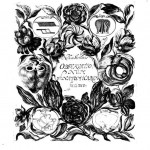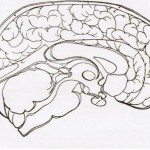
Guidelines for readers of the scientific papers by Niels Stensen
By Troels Kardel, MD
Stensen’s active life in research lasted from 1660 to 1674. His 34 scientific works fall into two main categories: the anatomical works and the geological works. 33 of these were collected and edited in Nicolai Stenonis Opera Philosophica (OPH) by Vilhelm Maar in 1910. Stensen’s first work in science , On hot springs (1661), was still undiscovered at the time of Vilhelm Maar’s edition.
Stensen’s works were published by Springer Verlag in English in 2013, Nicolaus Steno: Biography and original papers of a 17th century scientist, edited by T. Kardel and P. Maquet. In the English version the enumeration given by Vilhelm Maar was retained.
Stensen’s works were published in Italian in 1986, the Opere scientifiche I-II. In this edition Stensen’s De thermis was defined as opus one and the subsequent works followed Maar’s numbering plus one.
The geological works published between 1667–1670 are OPH 23, 27, 29, 30 and On hot springs.
The anatomical works can be sub-grouped as follows, with the time and place of origin indicated.
1. Works on the glands and lymphatics: OPH 1, 2, 3, 4, 5, 6, 7, 8, 11, 12, 13 (Netherlands, 1661–1663) ; the second part of OPH 15 (Copenhagen, 1664). Many pages were spent on a dispute with Gerard Blaes and his allies on priority for the discovery of the excretory duct of the parotid gland. Stensen’s account of the discovery is found in OPH 1, his report in OPH 2.
Fig. 1. The left parotid gland and its excretory duct with a probe inserted from the mouth and adjacent lymph gland receiving lymphatic vessels (g) from the chin in a calf (OPH II). Note that the skin flap draws down the vessels from a more straight position in situ.
2. Works on the heart and muscles: OPH 9, 10 and 14 (Netherlands, 1662–1663); the first part of OPH 15 (Copenhagen,1664); the main work, Specimen of elements of myology OPH 22 (Florence,1667); OPH 32 (Copenhagen, 1673).
Fig. 2. Baroque title copper from OPH 15, Copenhagen 1664, with hand-writing and drawing in the style of Stensen.
3. Works on the brain: the Discourse of anatomy of the brain (Paris, 1665, published in 1669); and OPH 28 (Innsbruck, 1669).
Fig. 3. Sketch of a mid-line section of the human brain by Stensen.
4. Works on the circulation of the blood: OPH 11 (Leiden, 1662); OPH 33 (Copenhagen, 1673).
Fig. 4. The pulmoray and peripheral circulation of blood drawn by Stensen 1673 (OPH 33).
5. Works on foetal malformations: OPH 20 (Paris, 1665); OPH 28 (Innsbruck,1669).
6. Comparative works on reproductive organs and foetal growth: OPH 16 and 17 (Copenhagen, 1664); OPH 19, 20, 21, 24, 25, and 26 (Florence, 1668). Stensen concludes in OPH 26 that ovaries in viviparous animals and human females are analogous with ovaries in oviparous animals and should not be termed female testicles.
7. An essay on scientific endeavour is the Prooemium, OPH 31 (Copenhagen,1673). This highly readable essay contains Stensen’s most famous words, “Beautiful is what we see, more beautiful what we know, but by far the most beautiful is what we do not know.”
Stensen’s dissection of a reindeer while working as Royal Anatomist in Copenhagen, 1672, (without number in OPH), was reported by his teacher Thomas Bartholin, and was illustrated most likely by his students.
There are thematical overlaps between the anatomical and geological papers. Thus, the first geological work, OPH 22, contains a consideration of the formation of teeth and the need to know more about this, ”because ignorance of the formation of teeth has meant that the cure of almost all sicknesses affecting teeth is left only to chance. Who can stop tooth decay once it has begun? Who can lighten their pains?” Stensen’s main geological work, the Prodromus on solids, OPH 27, contains an original description of the compartments of the water space in the body with Stensen’s conclusion that the formation of stones, such as bladder and gallstones, takes place by accretion in the so-called external water space of the body.
An interest in stone formation in living beings was evident already in the so-called Chaos manuscript written by Stensen in 1669 as a young medical student, an indicator some of his later research interests.
Web access to manuscripts by Stensen:
Biblioteca Nazionale Centrale di Firenze:
Gal. 291, Contiene:
1 : De solido intra solidum naturaliter contento. Dissertationis prodromus
2 : Caos [sic!]
Royal Library, Copenhagen:
Elementorum myologiæ specimen;Canis carchariæ dissectum caput; Dissectus piscis ex canum genere





